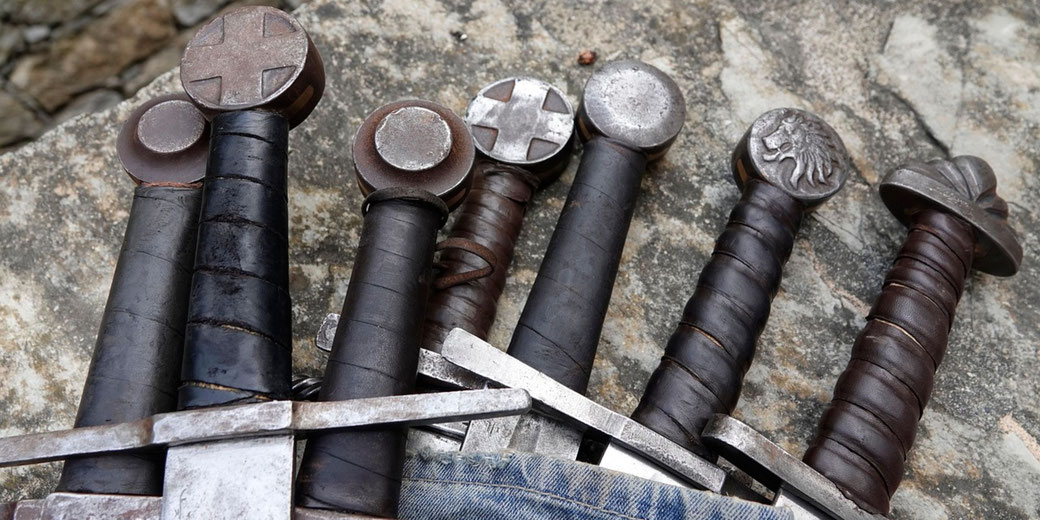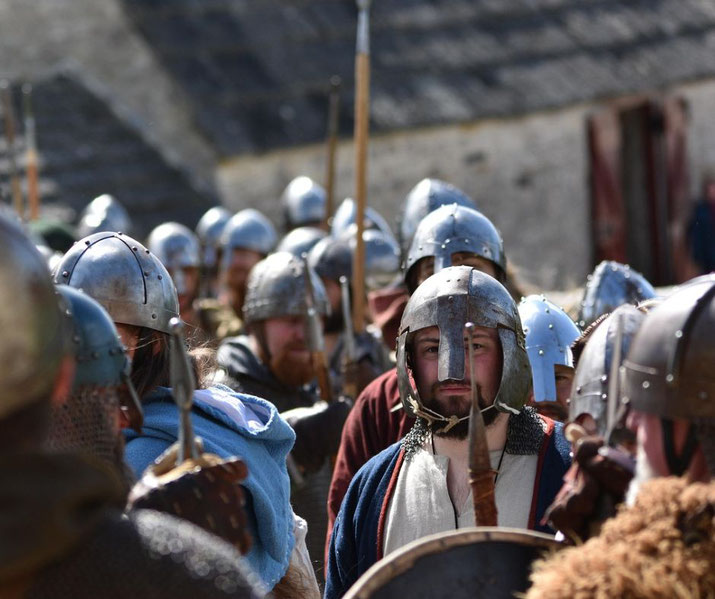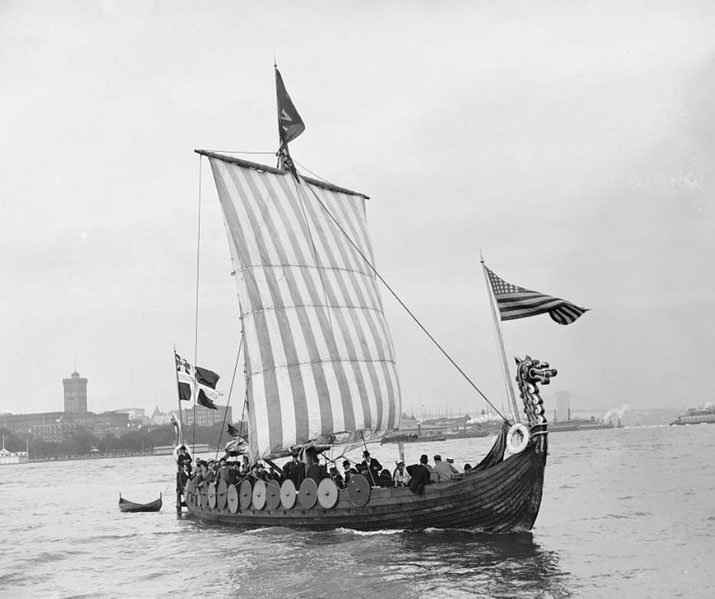How the Great Heathen Army slaughtered all before them during the Dark Ages

A storm of war began across the British Isles as fearsome seaborne warriors launched a campaign unlike anything the Anglo-Saxon kingdoms had faced before.
These invaders, seasoned by years of conflict and skilled in both battle and strategy, brought destruction to cities, abbeys, and armies alike.
Their arrival was a turning point in the history of medieval Britain.
Why the Vikings were in England
By the middle of the ninth century, Norsemen had already begun to make sporadic raids along the coasts of Britain and Ireland.
These early Viking attacks targeted isolated monasteries, undefended coastal villages, and small ports.
They aimed to seize treasure, capture slaves and gather supplies. The attack on Lindisfarne in 793 had shocked the Christian world and marked the beginning of Viking aggression in Anglo-Saxon England.
However, these raids were not yet part of an ongoing campaign of conquest. For nearly half a century, Viking warbands arrived during the summer and returned to Scandinavia before winter.
This pattern began to shift in the 850s, as the invaders showed a growing desire for plunder and a wish to settle permanently.
In 851, a Viking force wintered on the Isle of Thanet, marking one of the earliest recorded attempts to remain in England through the colder months.
Several reasons drove the Vikings to seek land in England. Political unrest and population pressures in Denmark and Norway encouraged eager chieftains to look overseas for new opportunities.
Internal strife, famine and disputes over succession in their homes made conquest abroad an attractive alternative.
England presented a tempting target. The island was divided into several competing Anglo-Saxon kingdoms, which made it easier for foreign forces to exploit rivalries and resistance.
Moreover, England was relatively wealthy and fertile, offering both economic gain and the possibility of new landholdings.
These reasons led Vikings to change their tactics and the eventual arrival of a new and more dangerous force, the Great Heathen Army.

What was the Great Heathen Army?
The Great Heathen Army was a large coalition of Viking warriors who invaded England in 865 and remained active until around 878.
Unlike earlier raiding parties, this force was intended to remain and conquer.
According to the Anglo-Saxon Chronicle, it was led by a group of Viking leaders, including Ivar the Boneless, Halfdan Ragnarsson and Ubba, who was described in some later Norse sagas as a son of Ragnar Lothbrok, a semi-legendary Norse warlord allegedly executed by King Ælla of Northumbria.
The invasion may have been partially motivated by revenge, but it clearly also aimed at conquest and settlement.
The army likely numbered in the low thousands, though precise figures remain uncertain due to the limits of contemporary sources; it brought fighters as well as support personnel and supplies, indicating long-term intentions.
The term “Great Heathen Army” comes from the Anglo-Saxon Chronicle, which described the force as a threat of unmatched scale and violence.
It was composed of Danes, Norwegians and possibly some Swedes, all bound together by the promise of land, treasure and glory.
The army operated in a more organized and strategic manner than earlier raiding parties.
It coordinated movements across kingdoms, used fortified bases as winter camps and employed advanced tactics, including siege warfare and negotiation.
It also showed a brutal willingness to destroy any opposition. Over the course of a decade, it dismantled several Anglo-Saxon kingdoms and threatened to wipe out the very idea of English resistance.

The major battles fought by the Great Heathen Army
The first major success of the Great Heathen Army came in 866, when it captured the city of York in Northumbria.
At the time, Northumbria was in conflict due to a civil split between King Ælla and King Osberht. The Vikings took advantage of the split.
After they seized York, they defeated the combined forces of Ælla and Osberht in a clear battle.
Both kings were killed, and Northumbria fell under Norse control. According to later Norse sagas, Ælla was executed using the gruesome blood eagle ritual, though this tale is likely legendary and not supported by records, and it likely comes from much later Icelandic accounts.
The capture of York gave the Vikings a lasting base in northern England. The city, known by the Norse as Jórvík, became the political and economic heart of Viking Northumbria, with wide trade ties to Ireland and Scandinavia.
After the army took control of Northumbria, the army moved south into Mercia and East Anglia.
In 869, they attacked East Anglia and killed its king, Edmund, who was honoured as a martyr after his death and was later canonised.
His shrine at Bury St Edmunds became a key pilgrimage site in medieval England.
With East Anglia under their control, the Vikings launched attacks into Wessex, the strongest remaining Anglo-Saxon kingdom.
In 871, a series of fierce battles occurred between the Great Heathen Army and the forces of Wessex, then ruled by King Æthelred I and his younger brother Alfred.
Among these battles was the important battle at Ashdown in January, where Alfred led an attack back on one wing of the army and his brother King Æthelred led the other.
The Vikings won several victories, including the Battle of Reading, but they were unable to destroy Wessex.
Eventually, they agreed to a peace deal and turned their attention back to Mercia, where they set up puppet rulers and strengthened their control.
By the mid-870s, most of England north of the Thames was under Viking rule.

How they were eventually defeated
The tide began to turn in 878. After years of standstill, the Viking leader Guthrum launched a surprise attack on Wessex in winter, which forced King Alfred to hide in the marshes of Athelney.
Alfred then gathered his forces and launched a counterattack. In spring, he defeated Guthrum’s forces at the Battle of Edington.
After this victory, Alfred forced Guthrum to convert to Christianity and sign the Treaty of Wedmore.
This agreement, reached in 878, though not preserved in its original form, may have set the basis for a later document known as the Treaty of Alfred and Guthrum, issued around 886.
The treaty established a border between Wessex and Viking-controlled lands, known as the Danelaw.
It did not drive out the Vikings. It limited their growth and ensured Wessex’s survival.
In the decades that followed, power slowly shifted in favour of the Anglo-Saxons.
Alfred’s successors, particularly his son Edward the Elder (r. 899–924) and grandson Æthelstan (r. 924–939), began a series of campaigns to recover land.
By the early tenth century, the Danelaw began to shrink. Æthelstan’s victory at the Battle of Brunanburh in 937 against a group of Norse, Scots, and Strathclyde Britons showed the rise of a unified English kingdom and stopped the breakup of the growing kingdom.
The Great Heathen Army had failed to conquer all of England, and its remaining warriors were either joined to local groups or forced to retreat.
By the mid-tenth century, Anglo-Saxon kings had taken back control of most of England.
The Viking threat would return in later generations, but the original Great Heathen Army had been broken.
Its era of terror, though violent and far-reaching, came to a bloody and clear end.
What do you need help with?
Download ready-to-use digital learning resources
Copyright © History Skills 2014-2025.
Contact via email
With the exception of links to external sites, some historical sources and extracts from specific publications, all content on this website is copyrighted by History Skills. This content may not be copied, republished or redistributed without written permission from the website creator. Please use the Contact page to obtain relevant permission.





